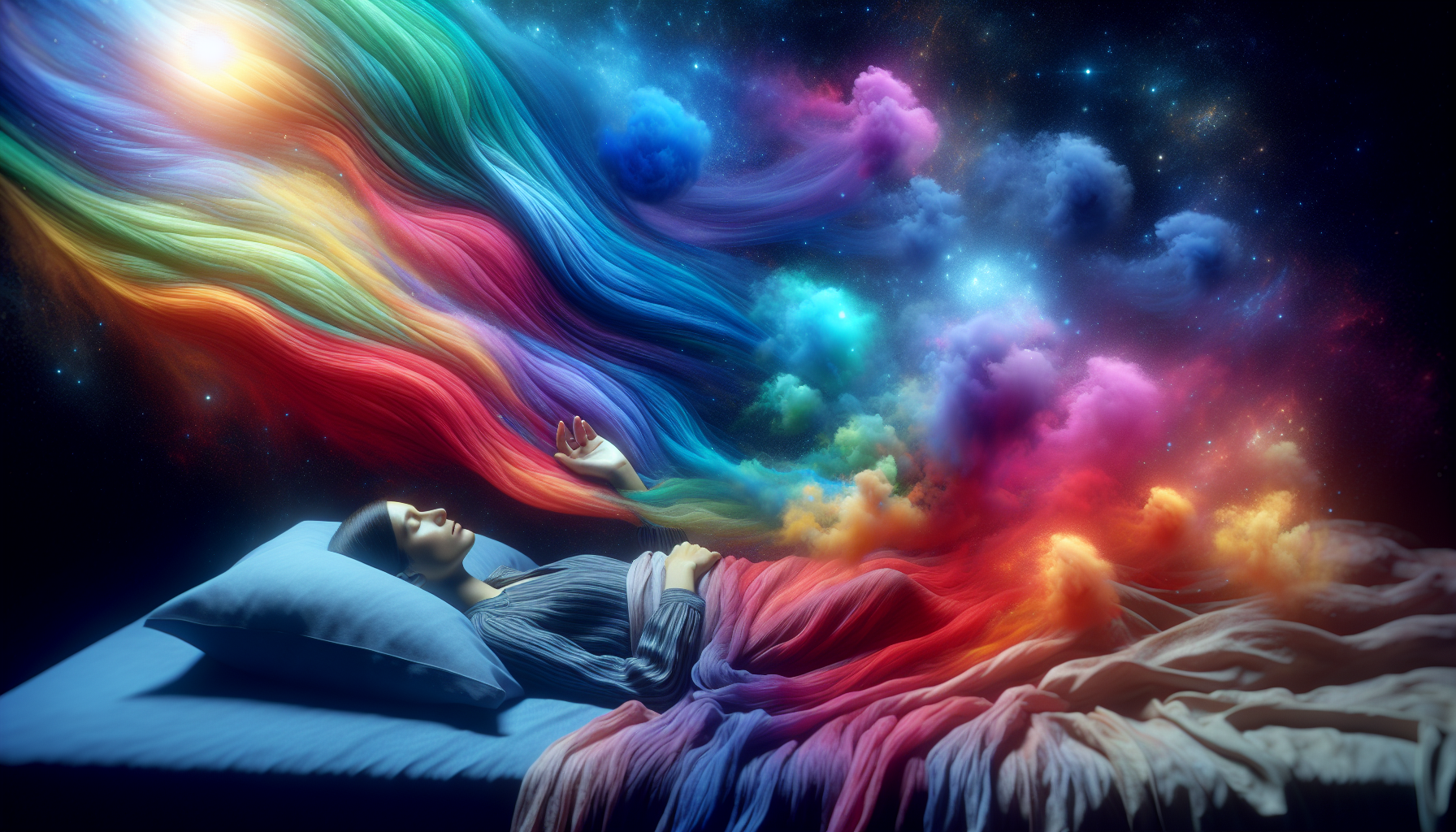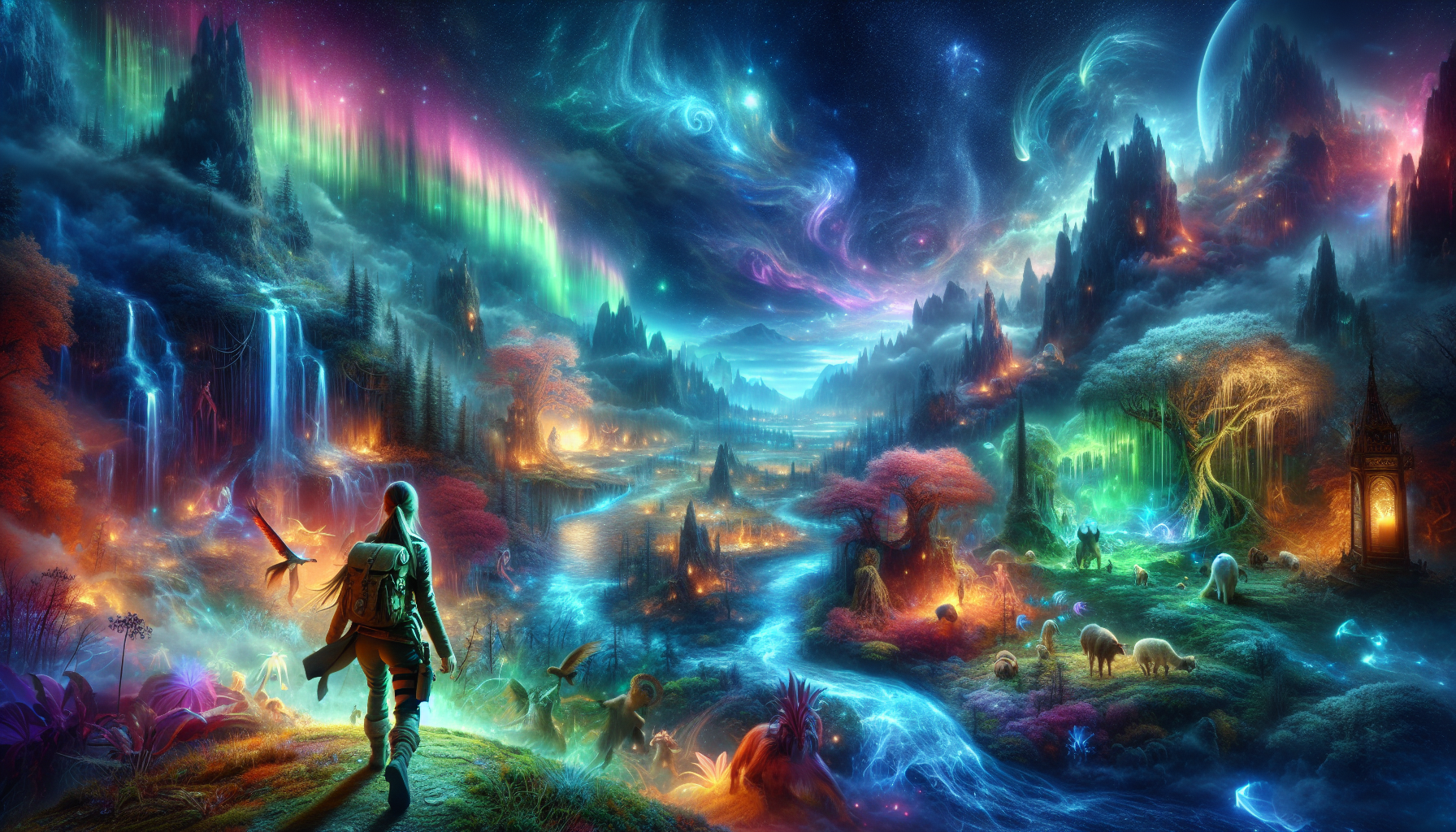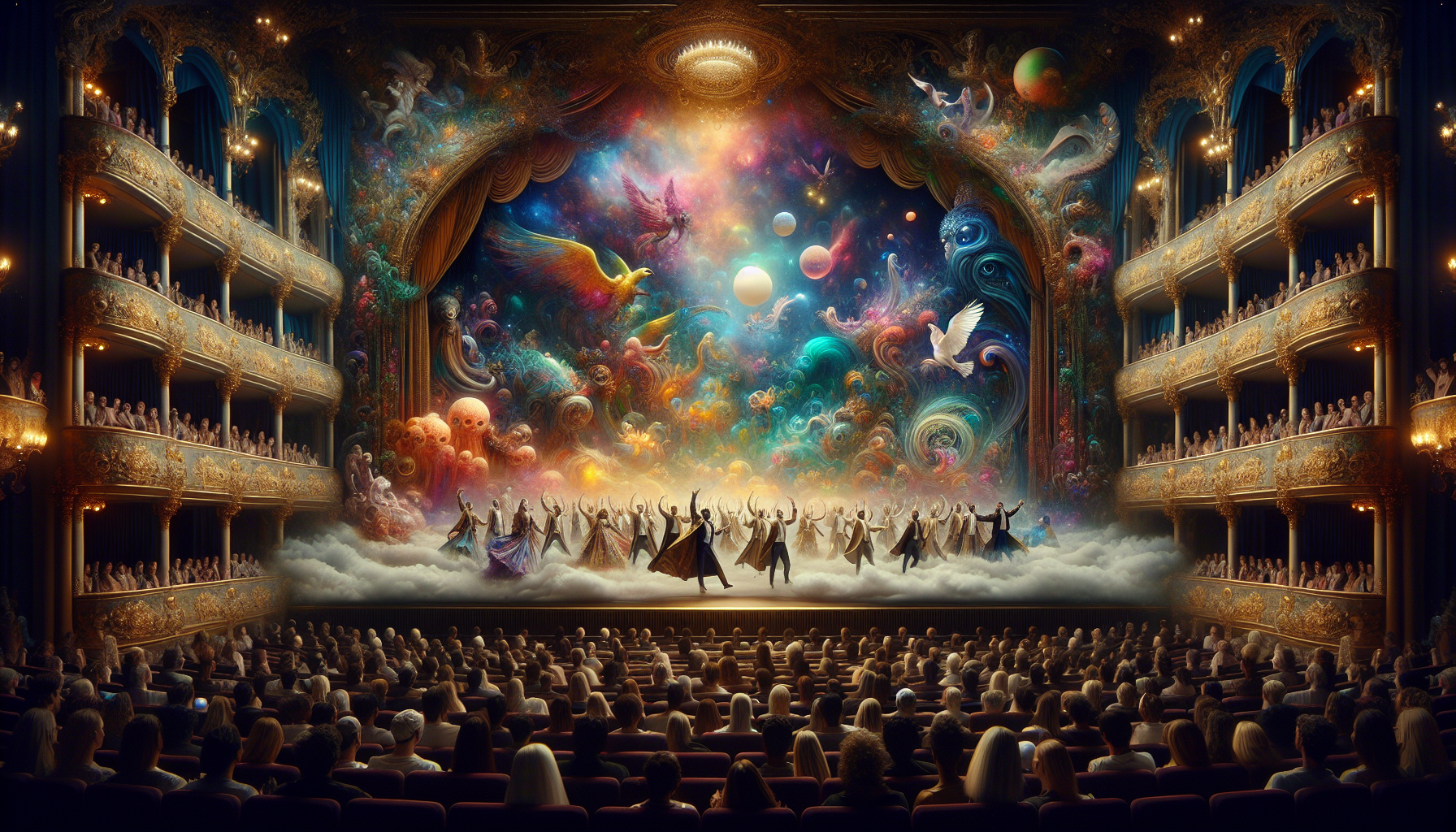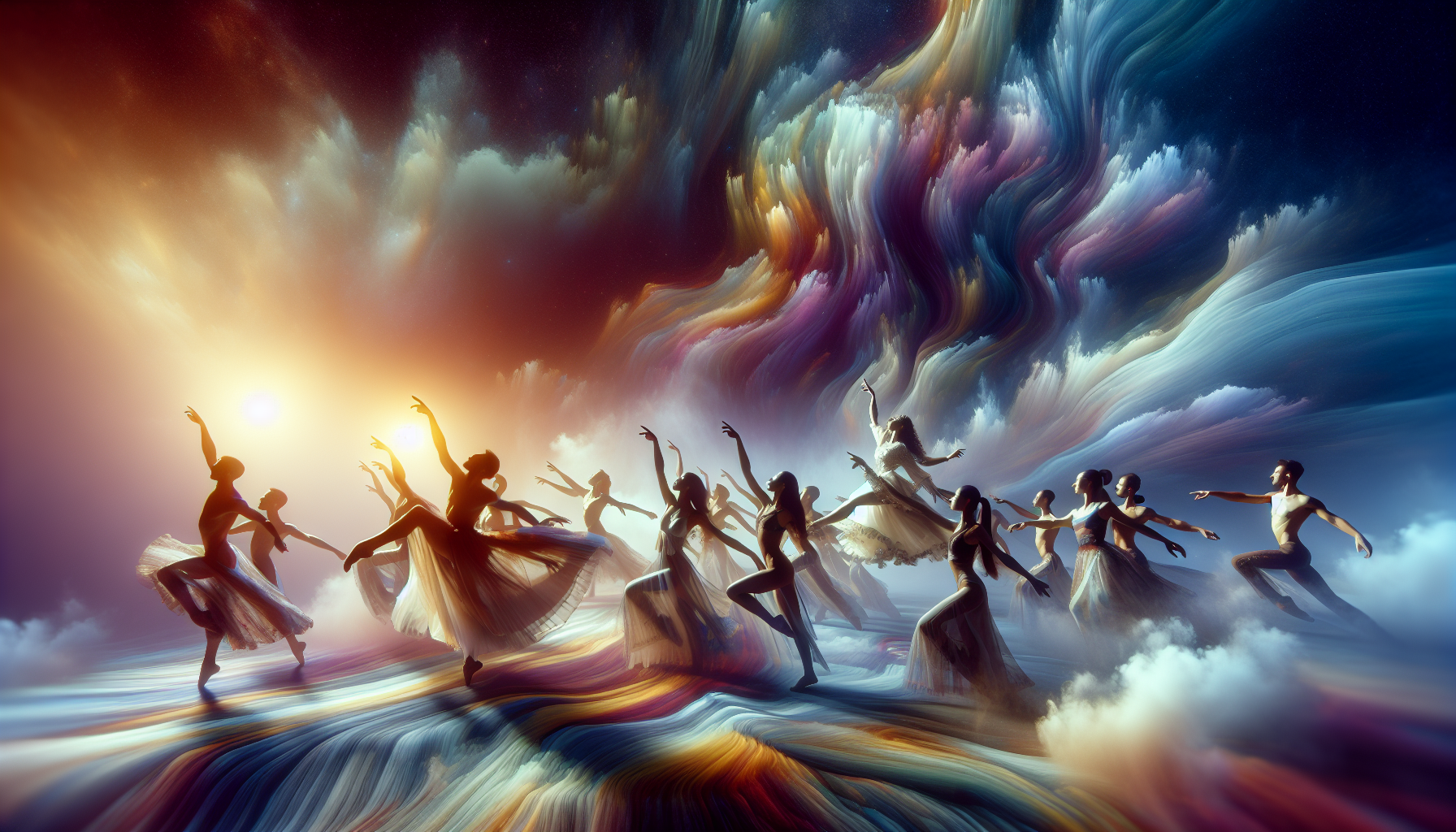In the mysterious world of dreams, where the subconscious mind weaves tales that blur the boundaries between reality and imagination, colors play a surprisingly pivotal role. Have you ever awakened from a dream, the vivid hues lingering in your mind like echoes of an uncharted realm? While the narratives of our dreams often capture our attention, it’s the colors that subtly enrich the tapestry of our nocturnal adventures, offering clues that can lead to deeper self-understanding. 🌈
Imagine drifting into a dream where you find yourself walking through a lush, verdant forest. The greens are not merely a backdrop; they envelop you, evoking feelings of tranquility and renewal. Alternatively, a dream bathed in deep reds might stir emotions of passion or urgency, demanding attention to aspects of waking life that require immediate action. The presence of colors in our dreams is not just a coincidental splash of our mind’s palette; it serves as a powerful symbol, hinting at emotions, warnings, and desires that our conscious mind might overlook.
The fascination with colors in dreams extends back through the ages, with ancient cultures and modern psychologists alike pondering their significance. From the Egyptians, who considered dreams as divine messages, to Carl Jung, who saw them as a bridge to the unconscious, the role of color has been a topic of enduring intrigue. Today, as we dive deeper into the psychology of dreams, understanding the language of color can unlock a new dimension of personal insight and growth.
In this article, we will embark on an illuminating journey to uncover how colors manifest in our dreams and influence their interpretation. We’ll explore the psychological underpinnings that explain why certain colors may appear more frequently and what they reveal about our inner world. You’ll discover the cultural and historical contexts that shape our understanding of color symbolism, and how these perceptions might differ across societies. Moreover, we will delve into practical techniques for analyzing your own dreams, offering tools to harness this understanding for personal development and emotional well-being.
So, why do colors appear in our dreams, and what can they teach us? By examining the spectrum of colors and their meanings, you will gain insights into the subconscious messages your dreams are sending. Whether you dream in vivid technicolor or soft monochromes, every shade holds potential significance. As we explore this kaleidoscope of meanings, prepare to unlock the secrets of your subconscious mind and discover how the colors of your dreams can paint a richer, more nuanced picture of your life.
The Psychology of Colors in Dreams
Colors have long fascinated humankind, from their symbolic meanings in various cultures to their psychological impacts on our everyday lives. In dreams, colors can hold significant meanings and may affect how we interpret our subconscious thoughts. Dreaming in color is a rich experience, often filled with vibrant details that provide insight into our emotional states, fears, desires, and even unresolved issues. This article delves into the intricacies of how colors in dreams can shape our understanding of what our minds are trying to communicate while we sleep.
Understanding the role of colors in dreams requires us to first consider the psychology of colors in our waking lives. Colors can evoke emotions, influence moods, and even alter our behavior. For instance, blue is often associated with calmness and tranquility, whereas red is linked to passion and intensity. These associations don’t just disappear when we close our eyes; rather, they can manifest in our dreams, adding layers of meaning to the narratives our subconscious weaves. Dreams are a blend of our experiences, emotions, and thoughts, and colors can provide a vivid backdrop that enhances or alters the way we perceive these elements.
To comprehend the impact of colors in dreams, it’s essential to recognize that not everyone experiences colors in their dreams in the same way. Some people dream in black and white, while others may experience dreams with muted colors or exceptionally vibrant hues. These differences can be attributed to individual variances in perception, personal experiences with colors, and even psychological conditions. For those who dream in color, the specific shades and tones can serve as a language of their own, offering clues into the dream’s deeper meanings.
Common Colors and Their Meanings in Dreams
Different colors can carry different meanings in dreams, often reflecting the emotions or situations we are dealing with in our waking lives. It’s fascinating how a single color can hold a spectrum of meanings, allowing for a rich tapestry of interpretations that vary from person to person.
Red is a color that often stands out in dreams due to its intensity and association with strong emotions. In the realm of dreams, red can symbolize passion, anger, or even danger. A dream filled with red hues may indicate that the dreamer is experiencing high levels of stress or excitement. Conversely, it could also point to a deep-seated anger or unresolved conflict that needs to be addressed.
Blue, on the other hand, is often seen as a calming presence in dreams. It can represent peace, tranquility, or spiritual awareness. Dreaming of blue skies or water might suggest that the dreamer is seeking solace or clarity in their life. However, if the blue is dark or murky, it might indicate feelings of sadness or depression. These interpretations can vary widely based on the dreamer’s personal experiences and cultural background.
| Color | Possible Dream Interpretation |
|---|---|
| Red | Passion, Anger, Danger |
| Blue | Calm, Peace, Sadness |
| Green | Growth, Health, Envy |
| Yellow | Happiness, Energy, Caution |
| Black | Mystery, Fear, Unknown |
| White | Purity, Clarity, Emptiness |
To gain a deeper understanding of how these colors might affect your own dreams, consider reflecting on the emotional context of the color’s appearance in the dream. Was it a background element or a focal point? Did it evoke a strong emotional response? These nuances can provide a richer interpretation, helping you to connect with your subconscious on a more profound level.
The Cultural Influence on Color Perception in Dreams
The perception and significance of colors in dreams are not universally consistent; they can be heavily influenced by cultural backgrounds and individual experiences. Different cultures ascribe various meanings to colors, which can affect how these hues are interpreted in dreams.
For example, in Western cultures, white is often associated with purity and innocence, a reflection of traditional wedding attire. However, in some Eastern cultures, white is the color of mourning and is worn at funerals. This cultural dichotomy can significantly affect how individuals from different backgrounds perceive white in their dreams. If a Westerner dreams of a white dress, they might interpret it as a symbol of new beginnings or purity, whereas someone from a culture where white is associated with mourning might see it as a sign of grief or loss.
Similarly, the color red has varying meanings across cultures. In China, red is a color of luck and prosperity, often used in celebrations like weddings and New Year festivals. Conversely, in some African cultures, red may symbolize mourning and death. These cultural interpretations can influence the emotional response and meaning of red in dreams. A person from China dreaming of red might feel a sense of fortune or happiness, while someone from a culture where red symbolizes danger might experience anxiety or fear.
Watch a Video on Color Psychology
For a more in-depth exploration of how colors affect us, both in waking life and in dreams, watch this enlightening video: “The Psychology of Color | How Color Affects Human Behaviour” – Channel: Practical Psychology.
Personalizing Color Interpretation in Dreams
Interpreting the colors in your dreams requires a personal approach that considers your unique experiences and emotions. While general interpretations can provide a framework, the true meaning of colors in your dreams is deeply personal and often reflective of your inner world.
Another useful approach is to explore your personal associations with different colors. Consider how you feel about certain colors in your waking life and how these feelings might translate into your dreams. Are there specific memories or experiences tied to these colors that could influence their meaning in your dreams? By linking your personal experiences to the colors you dream about, you can gain a deeper understanding of your subconscious thoughts and emotions.
- Keep a dream journal to track recurring colors and themes.
- Reflect on personal associations with colors in your waking life.
- Consider emotional responses to colors in dreams.
Incorporating these strategies into your dream analysis can transform the way you perceive and understand your dreams. The colors in your dreams are a unique language of the subconscious, offering a window into your deepest thoughts and emotions. By learning to interpret this language, you can unlock new levels of self-awareness and personal growth.🌈

Conclusion
Concluding an exploration into the fascinating interplay between colors and dreams, we find ourselves at a juncture where science, psychology, and creativity converge. Throughout this article, we have delved into the nuances of how colors can deeply influence our subconscious mind and alter the interpretation of our dreams. This exploration has uncovered a wealth of insights, from historical perspectives to contemporary research, all underscoring the profound impact colors have on our nightly narratives.
We began by exploring the historical context, where ancient cultures imbued colors with symbolic meanings, influencing how dreams were interpreted. From the vibrant blues of Ancient Egypt symbolizing truth and protection to the rich reds of Eastern traditions denoting luck and vitality, colors have long been perceived as powerful dream elements. This historical lens provided a foundational understanding of how deeply embedded these associations are in human consciousness.
Transitioning to the realm of psychology, we examined how modern research supports these age-old beliefs with empirical evidence. Studies have shown that colors can evoke specific emotions and reactions, which can, in turn, influence dream content and emotional tone. For instance, warm colors like red and yellow are often associated with feelings of warmth and excitement, while cool colors like blue and green can evoke calmness and serenity. These emotional responses can manifest in dreams, potentially altering their narrative and meaning.
Moreover, we delved into the intriguing concept of color symbolism in dreams. Many psychologists and dream analysts suggest that the colors we perceive in our dreams can act as a language of the subconscious, offering insights into our emotions, desires, and fears. For example, dreaming in shades of blue might indicate a period of reflection or a desire for peace, while vibrant oranges could symbolize creativity and change. Understanding these symbols can provide valuable self-awareness and personal growth, offering a window into our innermost thoughts and feelings.
Another critical point discussed was the potential impact of individual differences in color perception. Factors such as cultural background, personal experiences, and even physiological differences like color blindness can significantly influence how one perceives and interprets colors in dreams. This variability underscores the importance of personalized dream analysis, where one’s unique context and experiences are considered when interpreting dream colors.
Furthermore, we explored the practical applications of these insights. By being mindful of the colors we surround ourselves with, especially in environments like the bedroom, we can potentially influence the emotional tone of our dreams. Whether through the use of color therapy or simply choosing specific hues for bedroom decor, we have the ability to shape our dream experiences, promoting positive emotions and restful sleep.
In light of these discussions, the importance of understanding the influence of colors on dreams cannot be overstated. Not only does this knowledge enrich our understanding of the human psyche, but it also offers practical tools for enhancing emotional well-being and personal insight. As we continue to explore this dynamic field, it becomes clear that our dreams are not just random images but are deeply intertwined with our waking lives, emotions, and environments.
In conclusion, the influence of colors in dreams is a captivating subject that bridges the gap between ancient wisdom and modern science. It invites us to look beyond the surface and consider the deeper meanings and messages that our dreams convey. By embracing this understanding, we can embark on a journey of self-discovery and growth, harnessing the power of colors to unlock the secrets of our subconscious minds.
As you reflect on these insights, I encourage you to share your thoughts and experiences. How have colors appeared in your dreams, and what meanings have you attributed to them? Your comments and stories can enrich this ongoing conversation, providing diverse perspectives and fostering a deeper understanding of this intriguing topic. 🌈
Feel free to share this article with friends and family who might also be interested in exploring the mysteries of dream interpretation through the lens of color. By spreading awareness and knowledge, we contribute to a collective journey of exploration and discovery, inspiring others to delve into the fascinating world of dreams.
For those eager to further explore this topic, consider delving into additional resources and research. Websites such as Psychology Today and Scientific American offer a plethora of articles and studies on dream psychology and color symbolism, providing a deeper dive into the nuances of how colors affect our subconscious mind. These resources are an excellent starting point for anyone interested in expanding their understanding and continuing their journey into the world of dreams and colors.
Ultimately, the colors that paint our dreams are not mere happenstance; they are reflections of our deepest emotions, thoughts, and experiences. By paying attention to these colorful narratives, we open ourselves to a world of insight and inspiration, where each dream becomes a masterpiece of the mind. 🎨
Gabriel is a visual storyteller and dream archivist whose work explores the fragile boundary between memory and imagination. Through layered visuals and symbolic design, Gabriel captures the fleeting essence of dreams — those strange, beautiful, and sometimes haunting fragments that drift through sleep and linger in waking thought.
His creative journey is rooted in a deep fascination with the subconscious and the imagery it conjures. From half-remembered landscapes to recurring symbols and surreal encounters, each piece Gabriel brings to life becomes a portal into the inner archive — where time distorts, meanings shift, and personal mythology takes form.
With a background in handcrafted artistry and visual composition, Gabriel merges intuition with intention. His work doesn’t merely depict dreams; it preserves them, translating ephemeral moments into tangible expressions that evoke emotion, curiosity, and quiet revelation. Each visual is both a record and an invitation to explore the rich terrain of inner life.
Through illustrated dream journals, symbolic studies, and visual essays, Gabriel invites others to connect with the poetic architecture of their subconscious landscapes. His art becomes a mirror — not only of what we see at night, but of what we carry deep within.
His work is a tribute to:
-
The fragile beauty of forgotten dreams
-
The language of symbols in the subconscious mind
-
The inner worlds we visit but rarely name
Whether you’re a lucid dreamer, a seeker of hidden meanings, or someone fascinated by the mystery of sleep-born stories, Gabriel welcomes you to step into a space where dreams are not lost — they are archived, one vision, one sketch, one silent narrative at a time.





